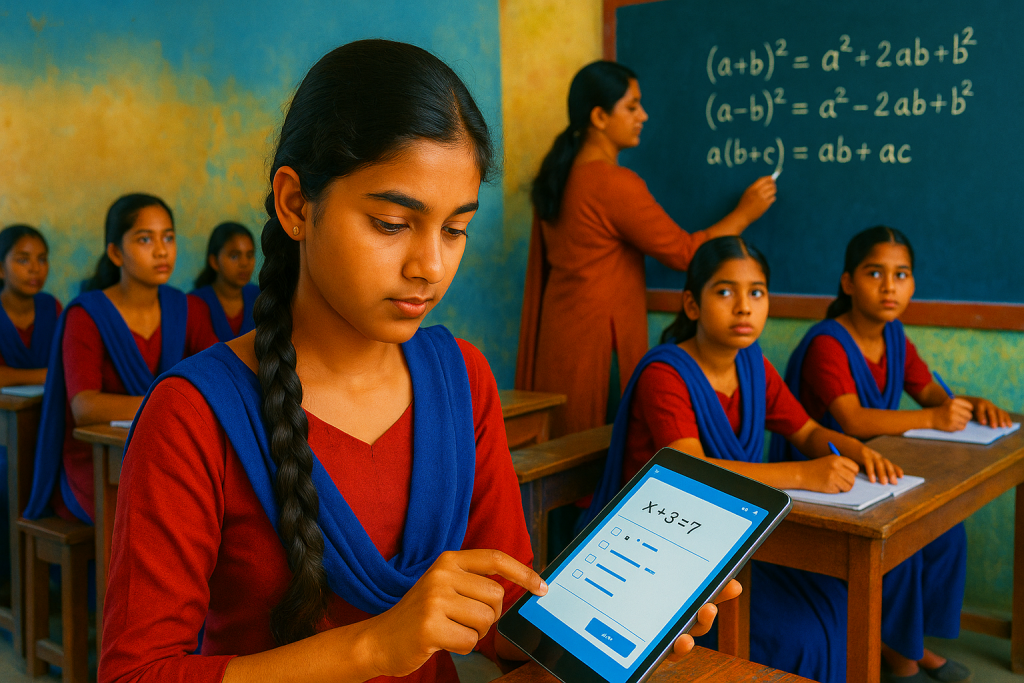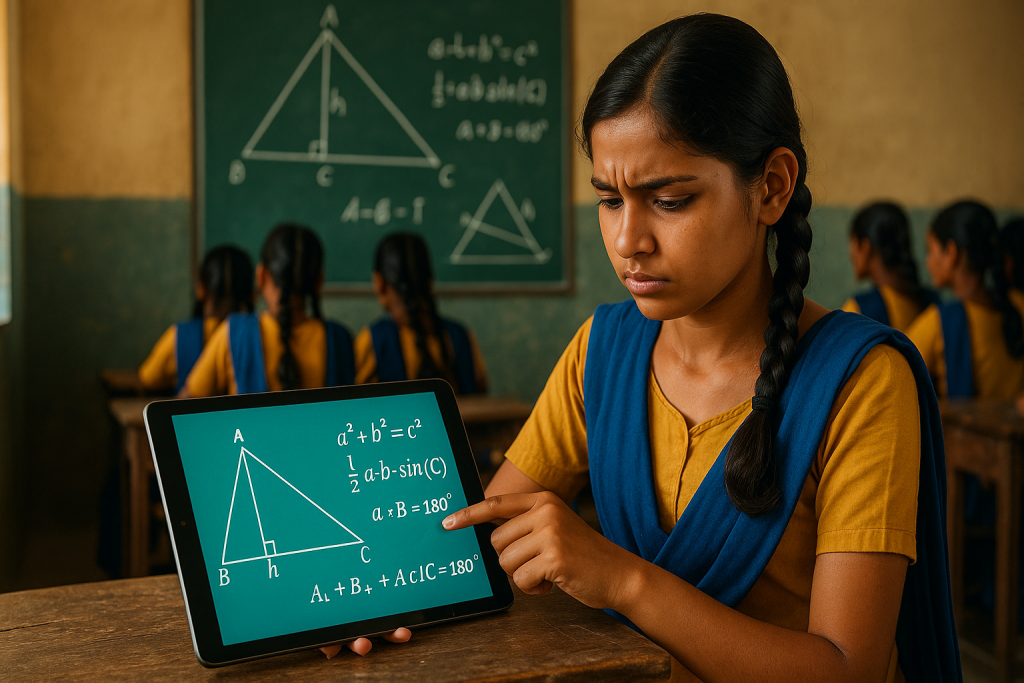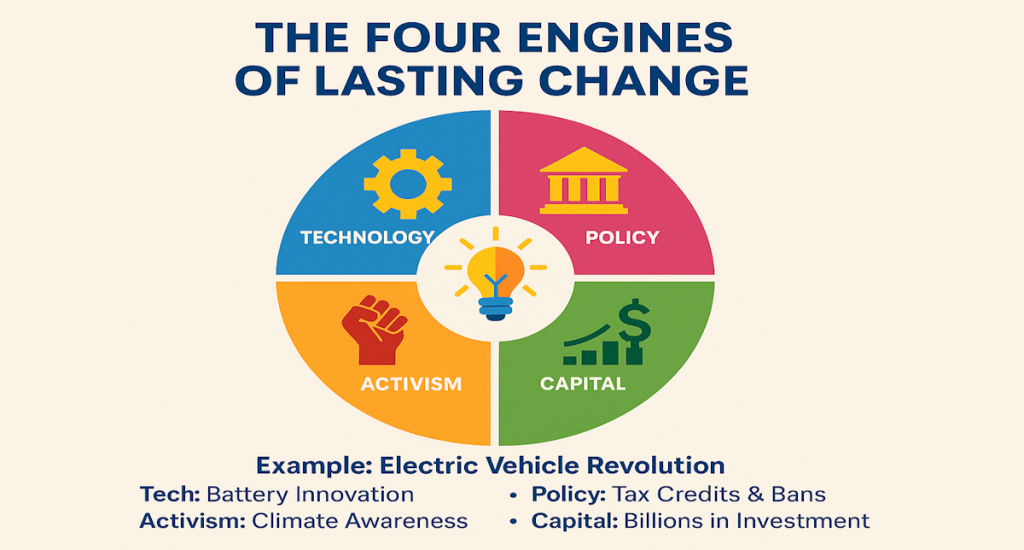Breaking Barriers: How AI Can Transform Mathematics Learning for Girls in Rural Punjab

In the dusty corridors of a government school in a small mofussil town in Punjab, thirteen-year-old Simran sits in her 7th grade mathematics class, her hands trembling as the teacher writes algebraic equations on the blackboard. The numbers and symbols blur before her eyes, and a familiar knot of anxiety tightens in her stomach. She is not alone. Around her, dozens of other girls share the same silent terror—a deep-seated fear of mathematics that threatens to dim their dreams before they even fully form.
This fear is not born in isolation. It is cultivated by years of traditional teaching methods that prioritize rote memorization over conceptual understanding, by overcrowded classrooms where individual attention is a luxury, and by societal expectations that subtly whisper that mathematics is not for girls. In rural Punjab, where patriarchal attitudes still run deep, the invisible barriers facing girls like Simran are compounded by practical challenges: inadequate infrastructure, shortage of qualified teachers, and limited access to supplementary learning resources that their urban counterparts take for granted.
Yet mathematics is not merely another subject to be endured and forgotten. It is the gateway to India’s most promising career paths—engineering, medicine, data science, artificial intelligence, and financial services. As India surges forward as a global technology hub, mathematical literacy has become the passport to economic independence and social mobility. For girls in mofussil towns, mastering mathematics is not just about solving equations; it is about rewriting the script of their lives.
This is where artificial intelligence enters as a transformative force—not as a replacement for teachers, but as a powerful ally that can democratize quality education. An AI-based learning tool specifically designed for mathematics can address the unique challenges that girls like Simran face in ways that traditional classroom instruction simply cannot.
First and foremost, AI eliminates the fear of judgment. In a classroom setting, girls often hesitate to ask questions, fearful of appearing slow or incapable in front of peers and teachers. This silence is particularly acute in communities where girls are already battling stereotypes about their mathematical abilities. An AI learning companion creates a safe, private space where mistakes are not sources of shame but stepping stones to understanding. Simran can ask the same question ten times, approach a problem from different angles, and learn at her own pace without worrying about disappointing anyone or confirming negative stereotypes.
The personalization that AI offers is revolutionary for students in government schools where a single teacher may be responsible for sixty or more students. An AI system can assess Simran’s current understanding, identify specific gaps in her foundational knowledge, and create a customized learning path that addresses her unique needs. If she struggles with fractions, the AI doesn’t simply move forward with the curriculum—it adapts, offering multiple explanations, visual representations, and practice problems until the concept clicks. This individualized attention, previously available only to privileged students with private tutors, becomes accessible to every girl with a smartphone or tablet.
Moreover, AI-based tools can make mathematics come alive through interactive visualizations and real-world applications. Instead of abstract symbols on a blackboard, Simran can see geometric principles in the architecture of the Golden Temple, understand percentages through scenarios of crop yields and market prices relevant to her community, and grasp algebraic thinking through puzzles and games that feel less like homework and more like play. This contextual learning bridges the gap between classroom theory and lived experience, making mathematics meaningful rather than mysterious.
The multilingual capabilities of AI tools are particularly crucial in Punjab, where many students think in Punjabi but are taught in English or Hindi. An AI tutor can seamlessly switch between languages, explaining complex concepts in Simran’s mother tongue while gradually building her comfort with mathematical terminology in other languages. This linguistic flexibility removes yet another barrier that has historically made mathematics feel foreign and inaccessible.
Beyond academics, an AI learning tool can serve as a constant source of encouragement and positive reinforcement. The system can celebrate small victories, track progress over time, and remind Simran of how far she has come—building not just mathematical competence but mathematical confidence. For girls who have internalized negative messages about their abilities, this consistent, data-driven affirmation can be transformative. The AI becomes an advocate that says, “You can do this,” backed by evidence of actual improvement.
The impact of conquering mathematical fear extends far beyond solving equations. When Simran masters a difficult concept, she doesn’t just learn mathematics—she learns that challenges can be overcome through persistence, that her intelligence is not fixed but can grow, and that she is capable of achieving goals that once seemed impossible. These metacognitive skills—resilience, problem-solving, analytical thinking—are the real treasures of mathematical education, and they transfer to every aspect of life.
As India’s economy continues its digital transformation, the girls who understand mathematics will be the ones who shape the future rather than merely observe it. They will be the software developers creating the next generation of applications, the data analysts informing policy decisions, the entrepreneurs building startups, the researchers solving climate challenges, and the leaders driving innovation. For girls in mofussil towns, an AI learning tool is not just about better grades—it is about accessing opportunities that can lift entire families out of economic insecurity.
The timing is critical. Seventh grade represents a pivotal moment when mathematical concepts become more abstract and many students, particularly girls, begin to disengage. Intervention at this stage can prevent a downward spiral of confusion, anxiety, and eventual abandonment of STEM aspirations. By providing support precisely when it is most needed, AI tools can keep doors open that might otherwise slam shut.
Furthermore, as these girls develop mathematical proficiency and confidence, they become role models for younger siblings and peers, creating a ripple effect throughout their communities. They challenge stereotypes simply by existing as living proof that girls from small towns can excel in mathematics. They become the evidence that inspires the next generation.
In the quiet determination of girls like Simran lies immense potential—potential that has been constrained by inadequate resources, social prejudices, and educational systems not designed to nurture their talents. An AI-based mathematics learning tool is not a silver bullet, but it is a powerful equalizer that can provide personalized, patient, judgment-free instruction to every girl who needs it. It can transform mathematics from a source of fear into a source of power, from a barrier into a bridge.
As Simran sits in that classroom, she deserves more than traditional methods that have failed countless girls before her. She deserves tools that recognize her potential, address her specific needs, and support her journey toward mastery. She deserves the chance to discover that she is not bad at mathematics—she simply hasn’t yet found the right way to learn it. And when she does, when that moment of understanding finally arrives and fear gives way to confidence, she won’t just be solving equations. She’ll be solving the equation of her own future, one where she is the author of her own story, empowered by knowledge that no one can take away.
The question is not whether girls in rural Punjab can excel in mathematics. The question is whether we will provide them the tools to prove what they have always been capable of achieving.








